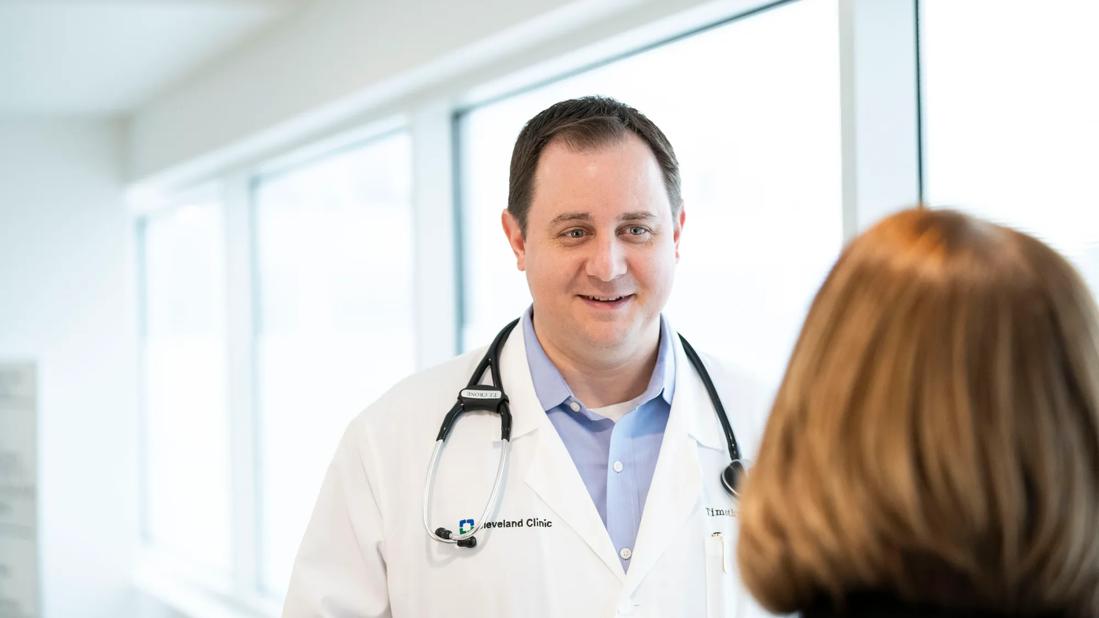Welcoming an organization into a hospital system takes care and detail work

The task of bringing a new hospital into a larger system involves lots of spinning plates: quality and safety issues, market analysis, communications and human resources management. The move is never easy, but preparedness and attention to detail can go a long way to make for a smoother transition.
Donald Malone, MD, has experienced a number of integration projects and says the recent process of welcoming Mercy Medical Center into the Cleveland Clinic Health System has been by far the closest to seamless that he has seen.
“None of these transitions are easy, but this is by far on the easier end of the spectrum,” says Dr. Malone. “That’s because Mercy Medical Center already had a strong leadership team and they bought into what Cleveland Clinic brings to bear.”
Advertisement
Cleveland Clinic is a non-profit academic medical center. Advertising on our site helps support our mission. We do not endorse non-Cleveland Clinic products or services. Policy
Based in rural Stark County, Ohio, and previously owned by the Sisters of Charity Health System in Cleveland, Mercy includes a 476-bed hospital with nine outpatient facilities. On Feb. 1, 2021, Mercy became Cleveland Clinic’s 19th hospital. Timothy Crone, MD, MBA, was named President.
“There are two ways that hospital integrations usually take place,” says Dr. Malone. “Some systems are like a holding company, and the integration is basically a financial one. Cleveland Clinic doesn’t do it that way. We think that our ways with patient care, the patient experience, and quality and safety are the way to go. As we interact and integrate, we want to bring what we have to them. Typically, if they have come with us, it’s because they want what we are able to bring them.”
Dr. Crone says the integration process starts with market analysis and strategic planning. At Mercy, he says, “this has been by far the most substantive part of integration. We really want to position Mercy well for future growth, and this is the foundational work.”
At the start of the Cleveland Clinic/Mercy integration, the leadership team identified potential for expanded cancer services and brought Mercy’s strong cardiology program into Cleveland Clinic’s award-winning Heart, Vascular & Thoracic Institute.
Operationally, the newly acquired hospital should be assessed in terms of what is and isn’t working.
“Look for, and explicitly recognize, things people already do well and be willing to learn from the experiences and successes the organization achieved prior to a merger or acquisition,” advises Dr. Crone. “There is real value toward engagement in approaching the integration with a sense of curiosity and willingness to adopt approaches that are new to your organization if they have worked well at the new member facility in the past. This is a win for everyone.”
Advertisement
Bridget Gorman, Executive Director of Hospital Operations, recommends communicating early and often so that people at every level of the newly acquired organization understand where the process stands and what it means for them. Communication cadences are critical, especially at a time when workforce retention is of utmost importance.
Dr. Crone agrees.
“In the absence of credible information, people have a tendency to fill in gaps by constructing their own stories,” he says. “For the first several months, communication should focus on reassurance and stabilization along with an abundance of vision sharing.”
The integration of informations systems is an enormous part of the overall process. Planning includes electronic medical records, HR documentation, email and more. Gorman, who attended to many of the operational details of the Mercy integration, says technology should be considered from the start.
“The timing of IT systems integration and implementation has a significant impact on caregiver alignment, business processes and clinical workflows,” Gorman says. “It is key to implement and integrate as early as possible with new acquisitions.”
The integration of hospital cultures
When Cleveland Clinic acquired Mercy Medical Center, it welcomed the hospital’s faith-based tradition, as it had previously when it acquired Marymount Hospital, says Dr. Malone. In both cases, Cleveland Clinic promised to maintain that tradition in perpetuity.
As a Catholic hospital, Cleveland Clinic Mercy Hospital follows the Ethical and Religious Directives for Catholic Health Care Services, which includes prohibitions on abortion, in vitro fertilization and birth control. The Directives go far beyond such issues, however, to include ethically based imperatives about caring for others. These dovetail with Cleveland Clinic health system values.
“Everybody thinks about reproductive issues when they think of a Catholic hospital, but much of the Catholic piece is about community and a commitment to serving people who are most in need. That’s not different than anything we do at any of our hospitals,” says Dr. Malone.
Cultural integration also involves workforce attitudes and leadership styles. Dr. Crone notes that “alignment work starts with creating the right teams, which often means redefining existing roles and making new hires to fill additional roles that are part of the health system’s operating model. Once the teams are in place, the work of cultural alignment and understanding of and consistent adherence to the processes we use is a significant effort.”
Advertisement
If changes to teams are needed, Dr. Crone advocates making them as soon as they have been identified.
“It is hard, but get over it early and get the right folks in place,” says Dr. Crone. “Waiting to make changes will both impede your success and erode your credibility.”
Executives who are about to embark on a hospital integration should understand that the process is complex even when all goes well. “There are many details: HR issues, quality and safety, policies and procedure, medical staff, board structure,” says Dr. Malone. “You need to have someone to line up all those details. It’s not just putting your name on the building.”
Like Dr. Malone, Dr. Crone regards the integration of Mercy into the Cleveland Clinic system as a success. As Mercy celebrates its first year as part of Cleveland Clinic, there is a sense of excitement about the future, he says.
“Mercy caregivers are excited about being a part of the health system, and the community is excited about having Cleveland Clinic in their market,” says Dr. Crone. “To have accomplished what we have in the context of the worst phase of a global pandemic and the critical staffing shortages we are all experiencing is truly something special.”
Advertisement
Advertisement

A Q&A with organizational development researcher Gina Thoebes

Cleveland Clinic transformation leader led development of benchmarking tool with NAHQ

Raed Dweik, MD, on change management and the importance of communication

Small business owners expand their networks and gain new insights

Leadership pearls from Margaret McKenzie, MD, hospital vice president

Successful communication means meeting listeners where they are

Hospital president followed his instincts to new opportunities

A team of supporters can help build confidence